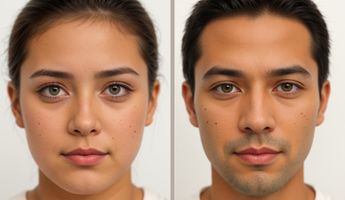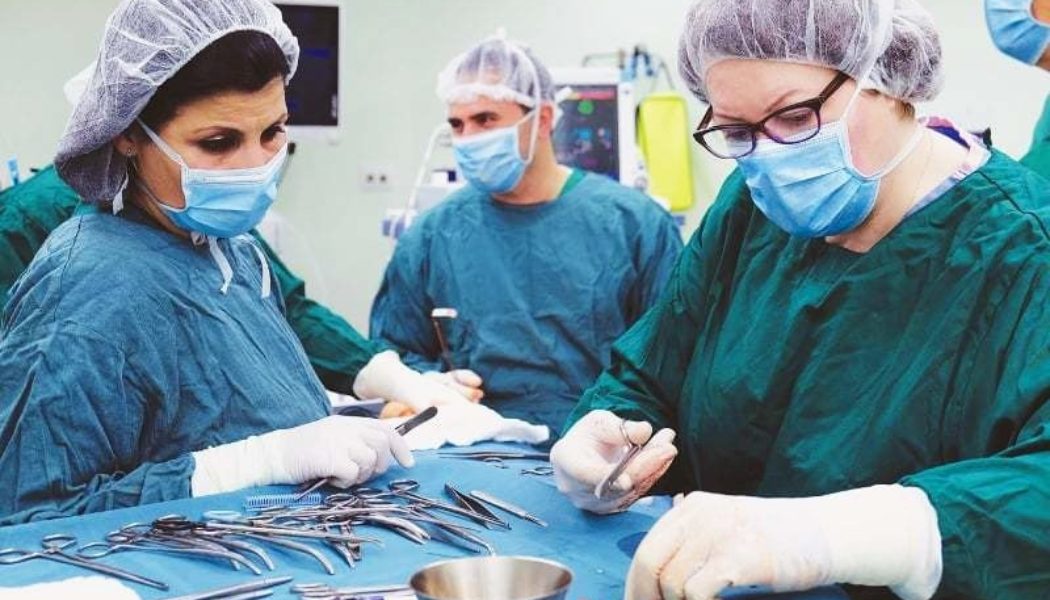Sex Reassignment Surgery (Female To Male) in Philippines
Search and Compare the Best Clinics and Doctors at the Lowest Prices for Sex Reassignment Surgery (Female To Male) in Philippines

Find the best clinics for Sex Reassignment Surgery (Female To Male) in Philippines
No pricing info available
Thailand offers the best prices Worldwide
Price: $ 556
From 1 verified reviews
toni de guzman, 29 November 2017
The place is tidy with a cozy ambiance. The consultation room is very relaxing, the space is not cramped, and the doctor is warm and accommodating. I had one session of Laser brightening peel on my face which I highly recommend! It lessens oiliness and breakouts and leaves a remarkable glow on the skin. Thumbs up for this procedure, It's a winner!
JMW Plastic Surgery, located in Alaminos, Pangasinan, Philippines offers patients Sex Reassignment Surgery (Female To Male) procedures among its total of 90 available procedures, across 1 different specialties. Currently, there's no pricing information for Sex Reassignment Surgery (Female To Male) procedures at JMW Plastic Surgery, as all prices are available on request only. All procedures and treatments are undertaken by the lead specialist at the Hospital, and they are accredited by PAPRAS - Philippine Association of Plastic, Reconstructive and Aesthetic Surgeons
Manila Kidney and Prostate Care Clinic, located in Butuan, Agusan del Norte, Philippines offers patients Sex Reassignment Surgery (Female To Male) procedures among its total of 43 available procedures, across 5 different specialties. Currently, there's no pricing information for Sex Reassignment Surgery (Female To Male) procedures at Manila Kidney and Prostate Care Clinic, as all prices are available on request only. All procedures and treatments are undertaken by just a small team of specialists, with 2 in total at the Clinic, and they are not accredited by any recognized accreditations institutes
- Home
- Philippines
Compare Before & After Photos of _procedure_photos.phpSex Reassignment Surgery (Female To Male)


Half-side view


Front view


Half-side view


Front view


Front view


Front view


Front view


Front view
WHY US?
At Medijump, we're making medical easy. You can search, compare, discuss, and book your medical all in one place. We open the door to the best medical providers worldwide, saving you time and energy along the way, and it's all for FREE, no hidden fees, and no price markups guaranteed. So what are you waiting for?

Free

Best Price

Widest Selection

Risk-Free
What you need to know about Sex Reassignment Surgery (Female To Male) in Philippines

Some people are born male and some are born female. While there are some people who are transgender, whose gender identity does not match their assigned sex. Sex change surgery, also known as gender reassignment surgery (GRS) or sex reassignment surgery (SRS) is there to help these people. This is a surgical procedure that changes the sex of a person. It changes a transgender person’s physical appearance according to there identified gender. It treats gender dysphoria in these people. This includes both feminization and masculinization surgeries. In masculinization surgery, there are two domains:
- Top surgery
- Bottom surgery.
In top surgery, mastectomy is performed to remove the breasts and give your chest a more male-like contour. Bottom surgery involves increasing the length of the clitoris which is called metoidioplasty, production of a penis, and scrotum which are known as phalloplasty and scrotoplasty respectively, and removal of the uterus that is a hysterectomy. This surgery is not for everyone. A number of things are considered before opting for surgery. However, normal people with assigned gender can also go for this if they want to.
Before the operation, your assigned sex does not correspond to your gender identity. You suffer from gender dysphoria. You feel uncomfortable in your skin. However; after the surgery, you are a person of your desired sex. You are converted from a female to a male.
What is the cost of Sex Reassignment Surgery (Female To Male) in Philippines?
Like any intricate healthcare process, the price for undergoing Sex Reassignment Surgery (Female To Male) is not a fixed figure in Philippines. The final tally significantly sways due to issues like the patient's comprehensive health status, distinct surgical necessities, and the operating surgeon's level of proficiency. It's vital, too, to factor in the cost of post-procedure care, prescribed medicines, and extra treatments, all of which substantially contribute to the total expenditure.
Moreover, distinct clinics situated in Philippines might provide an array of payment structures or offer financial aid alternatives. It's advisable to undertake thorough investigations or reach out to prospective clinics directly to obtain a precise cost prediction.
What does a Sex Reassignment Surgery (Female To Male) Procedure Involve?
Anesthesia is given to ensure that the patient does not suffer from pain during the surgery. Top and bottom surgeries are performed differently.
-
Mastectomy: It is performed in two ways. In one method, an incision is given around the areola and excessive fat and breast tissue are removed through it. The skin is left as it is for a year. It retracts in this period of time. This method leaves prominent scars. In the other method, excess skin is also removed along with the tissue and fat. This leaves fewer scars. After this, male-like the contour of the chest is obtained.
In the other step, female reproductive organs that are present inside your body are removed.
-
Hysterectomy: Total Hysterectomy is the removal of uterus and cervix. Another surgery, bilateral salpingo-oophorectomy (BSO) is performed to remove fallopian tubes. In this way, the entire female reproductive system is eliminated from the body.
After this, procedures for the construction of male reproductive organs begin. They include,
- Metoidioplasty: Androgenic hormones are given to increase the length of the clitoris. Length is increased to almost 1.6 to 2 inches.
- Phalloplasty: It is performed to create a penis or to increase the length of it. It can be done in 4 ways. All of these work on the same principle. A flap of skin is taken from a donor site of the body such as an arm or abdomen to make a penis out if it. It is joined to the urethra. This is the most complicated step of GRS. An erectile prosthesis is inserted into the penis to achieve an erection.
- Scrotoplasty: Scrotum is produced from labia majora and prosthetic testes are inserted into it.
How Long Should I Stay in Philippines for a Sex Reassignment Surgery (Female To Male) Procedure?
It is a long procedure involving a number of surgeries. There is top surgery and bottom surgery. Mastectomy takes 2 to 3 hours in the operation theatre. While bottom surgery requires more time. It takes 8 to 10 hours for a female to male GRS. You should plan to stay in the area for at least 14 days after your Procedure, During this duration, your health conditions are monitored regularly and your stitches are removed after 10 to 14 days. You can go home when allowed to by your physician.
What's the Recovery Time for Sex Reassignment Surgery (Female To Male) Procedures in Philippines?
You will have to take 2 weeks off work. After 2 weeks, you can start a light activity and can go back to office work. A Patient will need more time to get back to physical work. You can start strenuous activity 4 to 6 weeks after bottom surgery. Pain killers are given in this period to deal with moderate pain. Scars take some time to fade away. It can take years after the surgery to settle both physically and psychologically.
What sort of Aftercare is Required for Sex Reassignment Surgery (Female To Male) Procedures in Philippines?
Following points should be considered to look after you post-surgery:
- Go for regular check-ups.
- Take your medicines as and when prescribed by the doctor.
- Live with someone who takes care of you while you recover.
- Abstain from sexual activity till allowed by your doctor.
- Do not take a bath or shower with bandages intact. It can cause infection.
- Avoid strenuous exercise in the early few days after surgery.
- Do not lift heavy objects; it puts pressure on your stitches.
- Avoid excessive movement. Take a rest.
What's the Success Rate of Sex Reassignment Surgery (Female To Male) Procedures in Philippines?
The success rate of Sex Reassignment Surgery (Female To Male) within Philippines depends on a spectrum of elements. Such factors encompass the proficiency and prior expertise of the surgical unit, the comprehensive health condition of the person, their mental readiness, and compliance with the suggested after-treatment attention. An abundance of research has pointed out that a majority of individuals who choose Sex Reassignment Surgery (Female To Male) acknowledge a marked enhancement in their lifestyle quality, elevated mental health, and a noteworthy contentment level with the physical transformations.
According to a study, 97% of the people who went through this surgery found their results satisfactory. You need to be sure before opting for it, as it is a lifetime decision. GRS is mainly for the treatment of dysphoric and transgender people.
Are there Alternatives to Sex Reassignment Surgery (Female To Male) Procedures in Philippines?
The following are some alternatives to sex reassignment surgery:
- Hormone replacement therapy: this therapy aids in changing your secondary sex characteristics according to your desired sex. In the case of female to male sex change, testosterone is given. This induces hair growth and coarseness of voice. It reduces breast growth and changes in fat distribution in your body. It also stops menstruation.
- Altering physical appearance: you can alter your physical appearance, your dressing, your hair, your makeup in accordance with your desired sex. Do regular exercises to build up muscle mass which will make you look like a male.
- Psychological counseling: it will make you handle your personality. Gender reassignment surgery cannot be reversed. Therefore, you should make your decision wisely.
- Cosmetic surgery: it is a wide field covering a number of domains. It can alter your facial features, your body fat, your waist, your stomach, your chest to transform you into your desired gender. You can go for liposuction, mastectomy, Botox, fillers, Rhinoplasty, etc.
All of the methods, mentioned above are not permanent but are helpful. For permanent change, you have to go for sex reassignment surgery.
What Should You Expect Before and After the Procedure
Prior to initiating the Sex Reassignment Surgery (Female To Male), it is necessary to ensure each individual undergoes thorough psychological analysis and counseling. These checks serve to affirm the patient's emotional readiness and ability to cope with the aftermath of the procedure. In addition to mental health evaluations, multiple medical assessments are implemented to inspect their overall health state. Recognizing any pre-existing health issues is of utmost importance as they can potentially impact the result of the surgery. Regularly scheduled consultations with knowledgeable healthcare professionals are fundamental to this process. These meetings will entail in-depth explanations and discussions to help formulate a holistic understanding of the entire procedure and its ensuing effects.
After the execution of the surgical procedure, there's a need for mental readiness for an extensive recovery period. This stage typically demands diligent post-procedure care and major lifestyle adjustments. Surgical recovery isn't typically a swift process - it's a path that entails physical changes and lifestyle adaptations, necessitating a period of adjustment for the patient. The adoption of healthy habits becomes particularly important during this period. Activities like regular physical activity, adhering to a nutritious diet, and incorporating stress-relief practices are proven to carry several benefits. Moreover, in addition to the emphasis on physical recuperation, mental health should also be prioritized equally.
What are Potential Risks of Sex Reassignment Surgery (Female To Male)?
Each surgical procedure comes with inherent risks and potential complications, including Sex Reassignment Surgery (Female To Male). These might encompass general surgical risks such as infection, bleeding, or adverse reactions to anesthetic drugs. Specific to Sex Reassignment Surgery (Female To Male), there may also be healing-related risks, which could result in necrosis or lackluster cosmetic outcomes. Educating oneself about the possible complications of surgical procedures is beneficial for better preparation.
Additionally, extended exposure to hormonal treatment might escalate the risk of cardiovascular ailments or osteoporosis. There could also be mental health concerns such as depression or anxiety, which may spring from society's responses or personal adaptation to a new identity. Frequent consultations with a healthcare professional are essential to keep track of and mitigate any possible risks or complications.
Whilst the information presented here has been accurately sourced and verified by a medical professional for its accuracy, it is still advised to consult with your doctor before pursuing a medical treatment at one of the listed medical providers
No Time?
Tell us what you're looking for and we'll reachout to the top clinics all at once
Enquire Now

Popular Procedures in Philippines
Prices Start From $497

Prices Start From $1,552

Prices Start From $500

Prices Start From $1,000

Recommended Medical Centers in Philippines for Sex Reassignment Surgery (Female To Male)

- Interpreter services
- Translation service
- Religious facilities
- Medical records transfer
- Medical travel insurance
- Health insurance coordination
- TV in the room
- Safe in the room
- Phone in the room
- Private rooms for patients available

- Interpreter services
- Translation service
- Religious facilities
- Medical records transfer
- Medical travel insurance
- Health insurance coordination
- TV in the room
- Safe in the room
- Phone in the room
- Private rooms for patients available

- Interpreter services
- Translation service
- Religious facilities
- Medical records transfer
- Medical travel insurance
- Health insurance coordination
- TV in the room
- Safe in the room
- Phone in the room
- Private rooms for patients available

- Interpreter services
- Translation service
- Religious facilities
- Medical records transfer
- Medical travel insurance
- Health insurance coordination
- TV in the room
- Safe in the room
- Phone in the room
- Private rooms for patients available

- Interpreter services
- Translation service
- Religious facilities
- Medical records transfer
- Medical travel insurance
- Health insurance coordination
- TV in the room
- Safe in the room
- Phone in the room
- Private rooms for patients available

- Interpreter services
- Translation service
- Religious facilities
- Medical records transfer
- Medical travel insurance
- Health insurance coordination
- TV in the room
- Safe in the room
- Phone in the room
- Private rooms for patients available

- Interpreter services
- Translation service
- Religious facilities
- Medical records transfer
- Medical travel insurance
- Health insurance coordination
- TV in the room
- Safe in the room
- Phone in the room
- Private rooms for patients available

- Interpreter services
- Translation service
- Religious facilities
- Medical records transfer
- Medical travel insurance
- Health insurance coordination
- TV in the room
- Safe in the room
- Phone in the room
- Private rooms for patients available

- Interpreter services
- Translation service
- Religious facilities
- Medical records transfer
- Medical travel insurance
- Health insurance coordination
- TV in the room
- Safe in the room
- Phone in the room
- Private rooms for patients available

- Interpreter services
- Translation service
- Religious facilities
- Medical records transfer
- Medical travel insurance
- Health insurance coordination
- TV in the room
- Safe in the room
- Phone in the room
- Private rooms for patients available
Sex Reassignment Surgery (Female To Male) in and around Philippines
About the Philippines
The Philippines is an island nation in the heart of Southeast Asia. It extends from the south of China to the northern tip of Borneo. It is also known as the ‘Pearl of the Orient Seas’, the Philippines is an archipelago of 7,107 islands. It comprises three main island groups, Luzon, Visayas, and Mindanao. Manila, the capital city, lies in the southwestern part of Luzon. Quezon City is the largest and most populous city in the country.
It is a prominent English-speaking country and was once a colony of Spain and the United States. It’s the most Westernised country in Asia. However, its culture is a mix of indigenous Malay culture and Spanish and American heritage.
Besides being one of the top tourist destinations, the Philippines is also an emerging medical tourism destination. It ranks in 8th position among popular medical tourism countries and more than 10,000 medical tourists visit the Philippines every year for various treatments. The following factors all contribute to the progress of medical tourism within the Philippines.
- Expert and board-certified medical professionals with international qualifications and training.
- Internationally-accredited hospitals with state-of-the-art medical equipment and modern facilities.
- Affordable costs compared to advanced nations
- Inexpensive accommodation
- The English language is widely-spoken making communication with the Medical team and patients easy.
- Tropical climate helps in the recovery and recuperation
The most common and popular procedures and treatments in the Philippines are cosmetic surgery, weight-loss surgery, dermatology, ophthalmology, and dentistry. As of late, people come here even for liver and kidney transplant surgeries, and cardiac surgeries due to the cost advantage it provides.
For example, a Breast Augmentation surgery that costs between $7,500-$8,500 in the US costs only between $3,000-$3,500 in the Philippines which would be a saving of about 58% to 60%. Also, a coronary artery bypass surgery costing $70,000-$133,000 in the US, will only cost between $11,500-$17,500 and would result in a saving of almost 83% to 86%. Even after adding travel and living expenses, it still makes it a, very good value for the patient to get medical care in the Philippines and several of the more popular Hospital and Clinics are located in Manila, and are St. Luke's Medical Center, Makati Medical Center, The Medical City and Asian Hospital and Medical Center
Popular Parts of the Philippines
The Philippines has a total land area of 116,000 square miles, with a large population of 107,791,044 million people. It has many pristine beaches, mountains, rainforests, islands, heritage towns, and monuments, With hotels, food, and transportation very affordable, it’s also a good budget tourism destination.
The following are some of the most beautiful places to visit in the Philippines:
- El Nido –is known for its white-sand beaches, clear turquoise waters, and coral reefs and is the gateway to the Bacuit archipelago which is a group of islands. The laid-back town of El Nido is a base for island-hopping tours, and kayaking trips to mountainous Cadlao Island, El Nido is situated on the northern edge of mainland Palawan.
- Coron – Is also situated in Palawan and is known for its warm waters, ideal for snorkeling, kayaking, and deep diving. The breathtaking Kayangan Lake, surrounded by karst walls is a visual treat. It is the cleanest lake in the Philippines.
- Tubbataha Reefs Natural Park –is also part of Palawan and is situated to the southeast, in the Sulu Sea. It’s home to countless coral reefs, and expansive breeds of fish, dolphins, sharks, and whales and It is a great water destination for divers.
- Banaue Rice Terraces – They lie within the mountainous region of the Cordilleras. The rice terraces are about 2,000 years old, a result of the labor of the predecessors of the region and They provide efficient space for people to farm on.
- Intramuros – The walled historical area of Manila contains the remains of a bygone era with its cobblestone streets and preserved remnants. Walking tours and carromata rides (two-wheeled box-like vehicles drawn by a single native pony) are popular here.
- Mount Mayon –is a 2,500-meter-tall active volcano. It’s famed for its perfect symmetry and accurate conical shape. You can enjoy the view from some distance or experience it at close quarters, by hiking for a couple of days.
- Hinatuan Enchanted River – Locals believe the river has mystical qualities. They feel fairies and Engkanto (other nature spirits) guard the enchanting blue-green river. The unknown source of clear saltwater is another mystery surrounding the river.
Boracay and Siargao are other popular tourist spots with their powdery white sand and water activities.
Weather and Climate in the Philippines
The Philippines has a tropical maritime climate. The general weather is hot and very humid. It experiences only three seasons:
- Summer Season – A very hot and dry summer season is between March and May.
- Wet Season – Rainy Season is between June and November when the southwest monsoon is most active. In this period, typhoons are common, especially during September and October.
- Dry Season – There is a cool and dry season between December and February, due to the cold winds brought in by the northeastern monsoon.
The average temperature of the Philippines ranges between 25°C and 32°C (78-90°F) with humidity of about 77%. High-altitude areas are much cooler, with night temperatures dropping to 20°C (68°F). The average annual temperature is around 26.6°C (79.9°F)
Getting Around in the Philippines
The Philippines is an island nation, most international travelers reach the country by air. The country has many international airports in various cities including Cebu, Davao, Manila, Kalibo, and Angeles.
Many airlines operate flights in and out of Manila to several destinations. Philippine Airlines, Cebu Pacific, and Air Asia are the national carriers of the Philippines. Singapore Airlines, Cathay Pacific, and many Middle Eastern airlines operate direct flights to Manila. The Southeast Asian cities of Bangkok and Ho Chi Minh City have wide connectivity to Manila and Cebu. You can reach Manila directly from London by flying Philippine Airlines. US travelers can fly via Japan to the Philippines.
Cebu Pacific, Tigerair Philippines, and PAL Express are some low-cost carriers that service domestic destinations in the country.
For transport within the Philippines, you have Jeepneys which are WWII- army jeeps converted into transport jeeps. They are cheap, open, and usually fully loaded with passengers which are normally cramped with 14 to 20 people sitting shoulder to shoulder depending on the length of the vehicle They operate as collective taxis, picking up and dropping passengers within cities.
Tourist Visas in the Philippines
Travelers from more than 150 countries that have diplomatic relations with the Philippines can enter the country without a tourist visa. EU, Australia, Japan, and the US are a few visa-exempt countries. In general, you can stay for up to 30 days, provided your passport is valid for at least six months after your arrival. Showing proof of onward and return journeys is compulsory.
Citizens of India, China, and Egypt are some of the countries that will need to get a visa in advance to enter the Philippines.
Additional Information
- Philippine Peso or Piso (PHP) is the official currency of the Philippines. Its subdivision is 100 centavos or centimos for a Peso. The current exchange rate for one US dollar is 51.99 PHP. You will be able to use US Dollars in Metro Manila and possibly in Cebu City. In other areas, it’s better to have pesos for exchange.
- You will find all major banks and plenty of ATMs everywhere. Master and Visa cards are accepted in most businesses.
- Tagalog or Filipino language is the main spoken language. English is also spoken and understood in the Philippines, due to the US influence during its colonization.
- Roman Catholicism is the major religion of the Philippines. 91% of the population are Christians and about 5.5% comprises of Islam religion.
- New Year’s Day, Araw ng Kagitingan, Independence Day, National Hero’s Day, Bonifacio Day, and Christmas are some of the important holidays in the Philippines.
Popular Searches
- Plastic Surgery in Thailand
- Dental Implants in Thailand
- Hair Transplant in Thailand
- Breast Augmentation Thailand
- Gastric Sleeve in Thailand
- Gender Reassignment Surgery in Thailand
- Laser Hair Removal in Bangkok
- Botox in Bangkok
- Dermatology in Bangkok
- Breast Augmentation in Bangkok
- Coolsculpting in Bangkok
- Veneers in Turkey
- Hair Transplant in Turkey
- Rhinoplasty in Turkey
- Stem Cell Therapy in Mexico
- Rhinoplasty in Mexico
- Liposuction in Mexico
- Coolsculpting in Tijuana
- Rhinoplasty in Korea
- Scar Removal in Korea
- Gastric Sleeve in Turkey
- Bone Marrow Transplant in India
- Invisalign in Malaysia
- Plastic Surgery in the Dominican Republic
- Tummy Tuck in the Dominican Republic
- Plastic and Cosmetic Surgery in Poland
- Rhinoplasty in Poland
- Hair Implant in Poland
- Dental Implants in Poland
- IVF in Turkey


